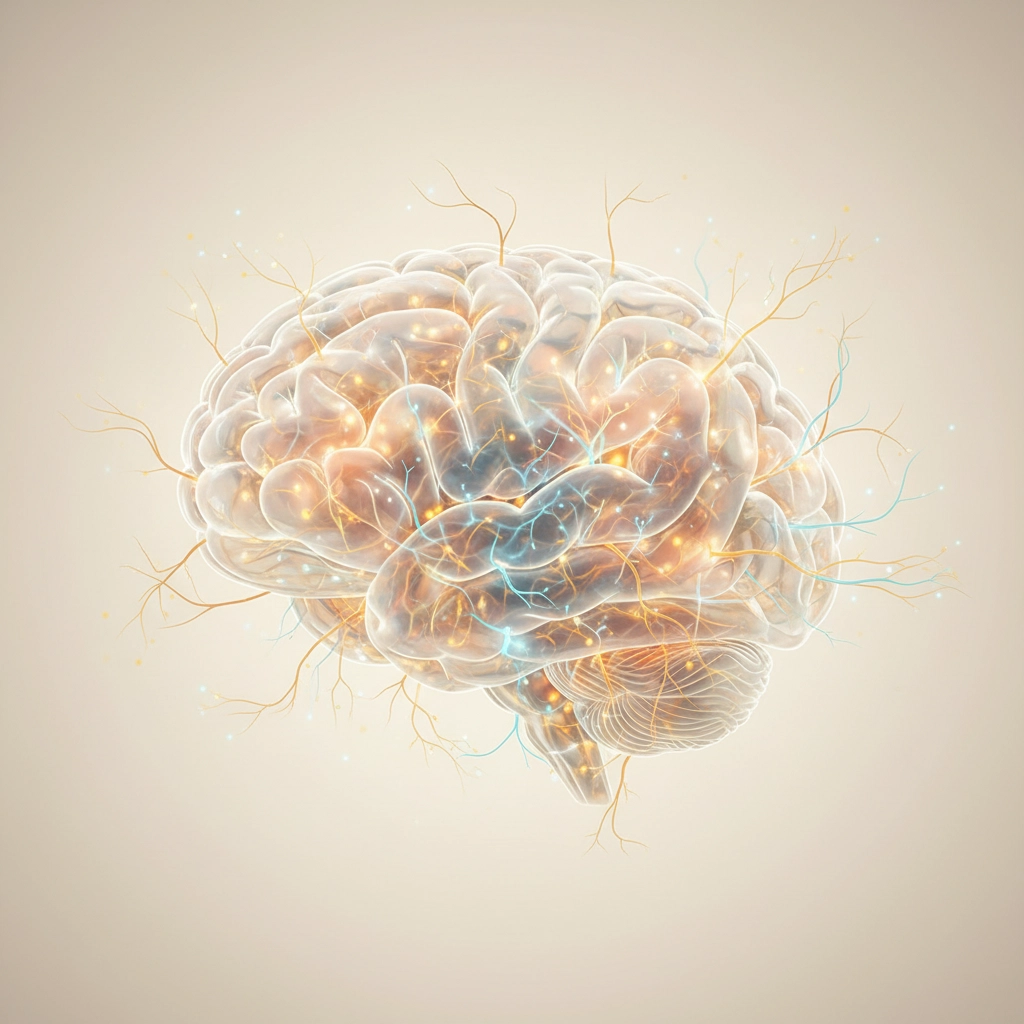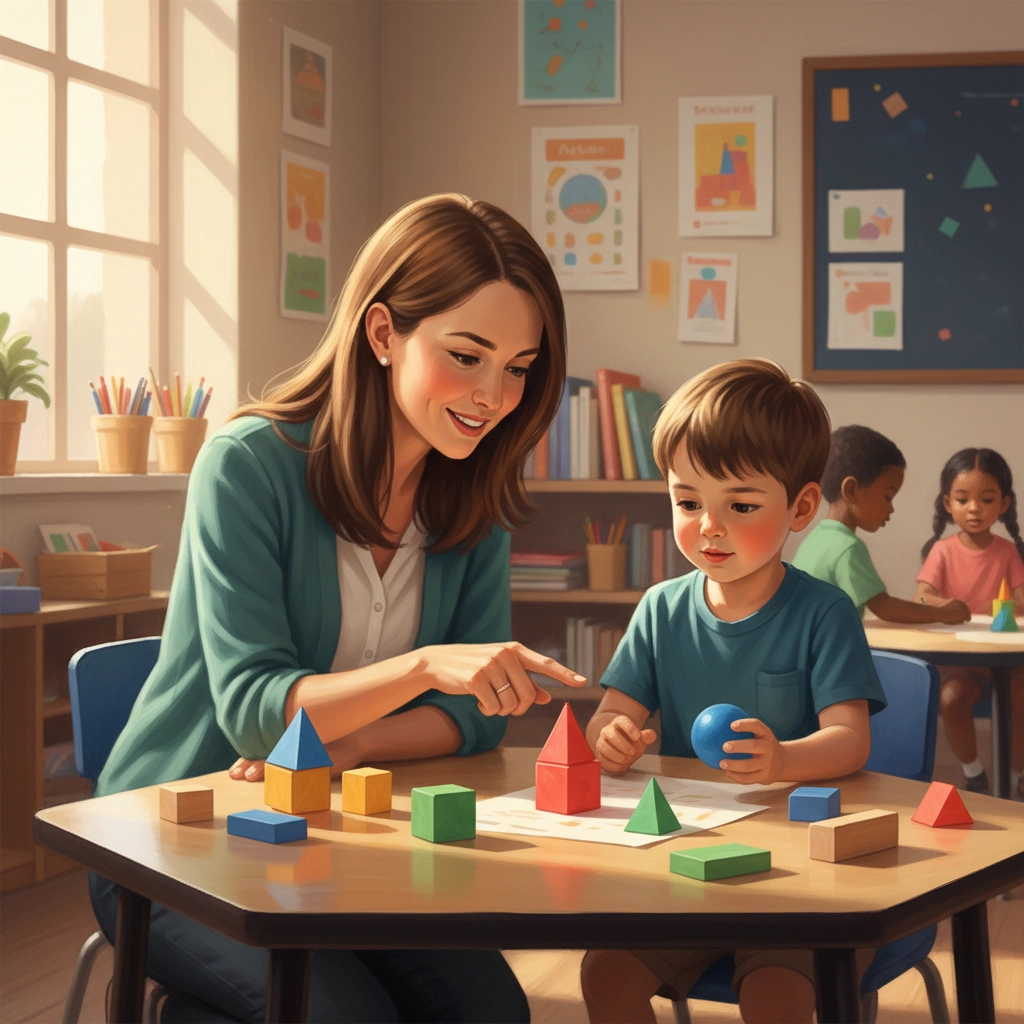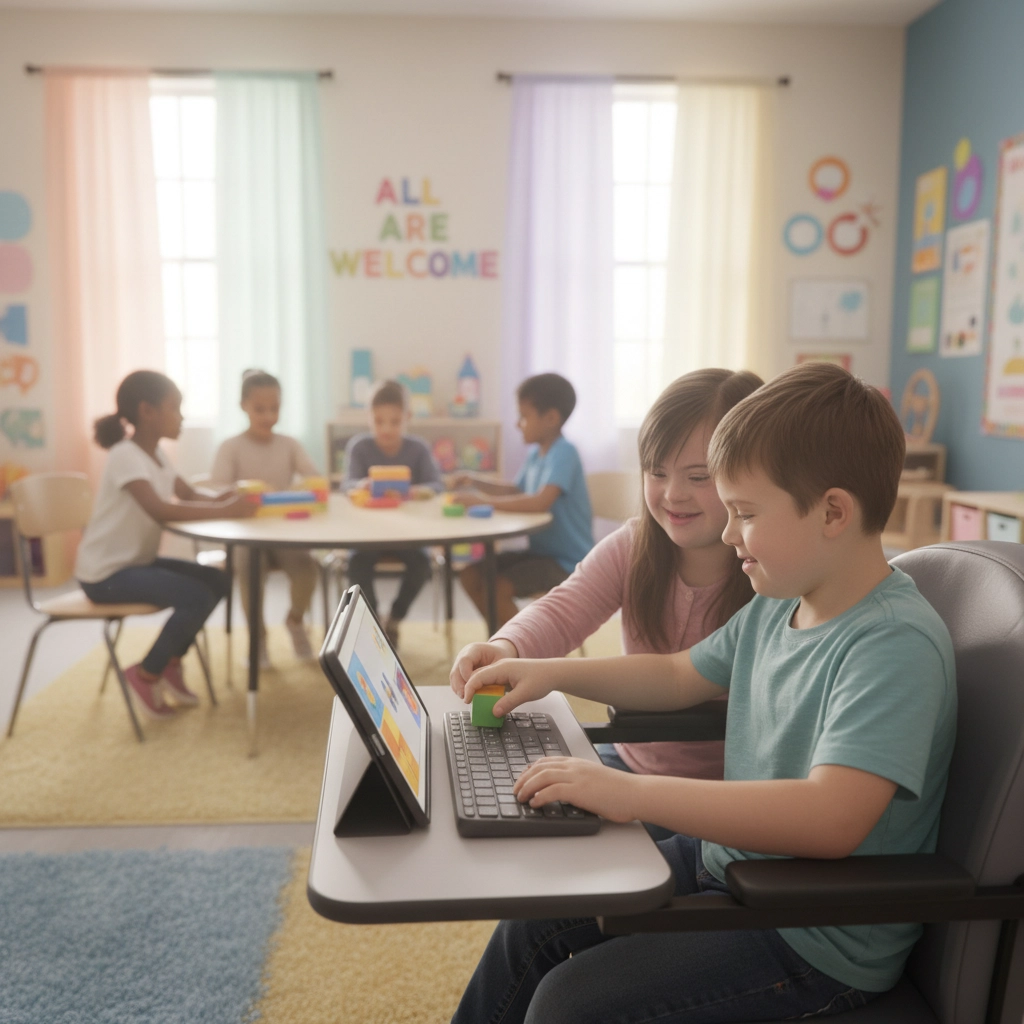What Education Could Look Like: Reimagining Schools with Neuroscience and Neuromovement
- Joana Talafre

- Oct 24
- 5 min read
Picture this: A classroom where children aren't sitting in rigid rows, straining to pay attention to information that doesn't connect with how their brains actually learn. Instead, imagine learning spaces where movement is welcomed, where each child's unique way of processing information is honored, and where the very design of education works with the brain rather than against it.
This isn't just wishful thinking. It's what becomes possible when we build education on solid neuroscience and the revolutionary principles of Neuromovement, developed by Anat Baniel. As advocates for inclusive education, we believe every child: especially those with learning differences, developmental delays, or disabilities: deserves an educational system that recognizes the incredible potential of their developing brain.
The Brain Science That Changes Everything
Here's what neuroscience tells us: the brain doesn't learn through repetition of the same thing over and over. It learns through creating new neural pathways, and this happens best when we provide novelty, gentle challenge, and: crucially: movement. When children move with awareness and attention, their brains literally rewire themselves. This is neuroplasticity in action, and it's the foundation of all real learning.

Traditional education often works against these natural brain processes. We ask children to sit still for hours, repeat the same information in the same way, and move through standardized curricula regardless of their individual developmental readiness. For children with special needs, this approach can be particularly limiting, often focusing on what they can't do rather than awakening new possibilities.
A Day in the Neuromovement-Informed Classroom
What would education look like if we designed it around how brains actually develop and learn? Let's walk through a reimagined school day:
Morning Arrival: Children don't rush straight to desks. Instead, they engage in gentle, exploratory movement activities that help organize their nervous systems and prepare their brains for learning. Some might lie on soft mats, exploring tiny movements. Others might experiment with balance or coordination. Each child finds what their system needs in that moment.
Academic Learning Through Movement: Math isn't taught through worksheets alone. Children might explore geometric concepts by moving their bodies through shapes, or understand fractions by dividing movements into parts. Reading happens in various positions: lying down, sitting, standing, even walking: because we recognize that some brains process information better when the body is in motion.

Individualized Pacing: There's no rush to "keep up." Each lesson is offered with multiple variations, allowing children to find their optimal challenge level. Some might work with complex problems while others explore foundational concepts: but everyone is learning and growing from where they are.
The 10 Essentials of Neuromovement in Education
Anat Baniel's 10 Essentials provide a roadmap for brain-friendly education. Here's how each one could transform learning:
1. Movement with Attention: Rather than mindless fidgeting, children learn to move with conscious awareness. This might mean noticing how their body feels when they're confused versus when they understand something new.
2. The Learning Switch: Teachers are trained to recognize when a child's brain is in "learning mode" versus when they're overwhelmed or checked out. Instead of pushing through, they help children find their way back to curiosity and engagement.
3. Subtlety: Big movements and loud voices often overwhelm developing nervous systems. This classroom values whispers, gentle touches, and small movements that allow the brain to perceive fine differences.
4. Variation: No two math lessons look exactly alike. No child is expected to learn to read in precisely the same way. Variation keeps brains engaged and creates multiple pathways to understanding.
5. Slow: There's time to process, to wonder, to make connections. The rushing that characterizes most schools gives way to the slower pace that real learning requires.

6. Enthusiasm: Teachers model genuine excitement about discovery and learning. But they also recognize that enthusiasm looks different for every child: for some it's quiet concentration, for others it's joyful movement.
7. Flexible Goals: While there are educational objectives, the path to achieving them varies for each child. A child with autism might demonstrate mathematical understanding through arranging objects rather than completing worksheets.
8. The Power of Gentle: Force doesn't create learning; it creates resistance. This classroom uses gentle guidance, gentle challenges, and gentle corrections that invite exploration rather than compliance.
9. Awareness: Children learn to notice their own learning process. "I understand better when I'm lying down." "I need to move my hands while I think." This meta-awareness becomes a lifelong learning tool.
10. Imagination and Dreams: Education isn't just about conveying information: it's about igniting each child's unique potential and helping them envision possibilities for their future.
Why This Matters Most for Children with Differences
For too long, children with disabilities or learning differences have been seen through a deficit lens. Traditional education often focuses on what's "wrong" and tries to fix it through repetition and force. Neuromovement-informed education flips this script entirely.
When we create learning environments based on brain science, something remarkable happens: children who were labeled as "unable to learn" begin to thrive. The child with cerebral palsy discovers new ways to communicate their mathematical thinking. The student with ADHD finds that movement actually helps them focus. The child with autism reveals their deep understanding when given alternative ways to express themselves.

We're not lowering standards: we're recognizing that there are infinite ways to be intelligent, to learn, and to contribute. We're creating conditions where every brain can make new connections and discover new possibilities.
The Ripple Effect: Benefits for All
Here's the beautiful truth: when we design education for the most vulnerable learners, everyone benefits. Neurotypical children also thrive when given movement breaks, multiple ways to demonstrate learning, and individualized pacing. Teachers find their work more fulfilling when they can truly meet each child where they are rather than forcing everyone into the same mold.
Families experience less stress when their children come home energized by learning rather than depleted by a day of struggling in an environment that doesn't fit their needs. Communities benefit from individuals who have been educated to recognize and develop their unique gifts rather than conforming to narrow definitions of success.
Making This Vision Reality
This isn't just a dream for some distant future. Schools around the world are already implementing these principles and seeing remarkable results. Teachers are being trained in Neuromovement approaches. Classrooms are being redesigned to support movement and multiple learning styles. Policies are shifting to recognize the importance of individualized education for all children, not just those with identified special needs.
At SIENS, we're committed to supporting this transformation. We believe that when education is grounded in neuroscience and honors the developing brain, every child has the opportunity to discover their potential and contribute their unique gifts to the world.
The question isn't whether this kind of education is possible: it's how quickly we can make it available to every child who needs it. And that includes every child, because every child's brain deserves an education that works with its natural capacity for growth, learning, and transformation.
The future of education is movement-rich, brain-friendly, and inclusive by design. It's education that sees possibility where others see problems, and creates the conditions for every child's brain to reorganize, learn, and flourish.
That future is within our reach. Let's build it together.


Comments